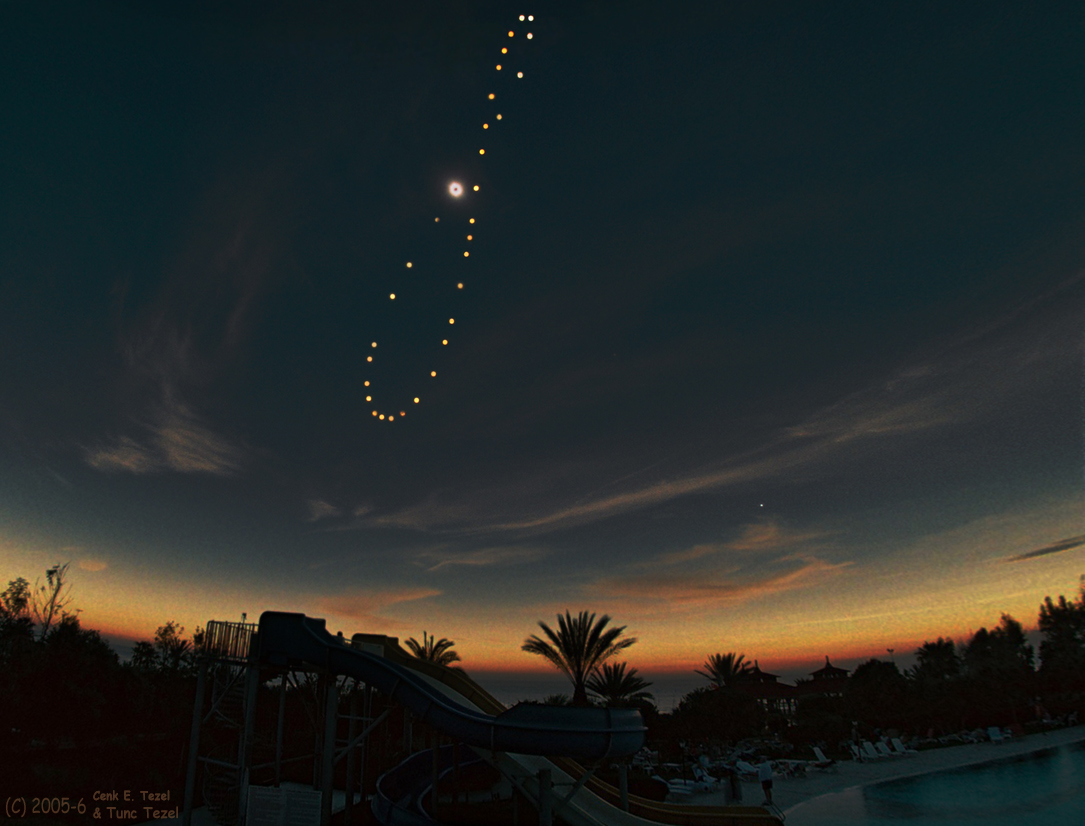Click picture for a larger version
Tutulemma: Solar Eclipse Analemma – Nasa.gov: If you went outside at exactly the same time every day and took a picture that included the Sun, how would the Sun appear to move? With great planning and effort, such a series of images can be taken. The figure-8 path the Sun follows over the course of a year is called an analemma. With even greater planning and effort, the series can include a total eclipse of the Sun as one of the images. Pictured is such a total solar eclipse analemma or Tutulemma – a term coined by the photographers based on the Turkish word for eclipse. The composite image sequence was recorded from Turkey starting in 2005. The base image for the sequence is from the total phase of a solar eclipse as viewed from Side, Turkey on 2006 March 29. Venus was also visible during totality, toward the lower right.
















Cool pic, but I can’t “Click picture for a larger version”?
I fixed it. Try again.
Really cool picture.
The figure 8 is a symbol of infinity. The Sun has spoken! Light is infinite.
I’m not sure I understand. This is the path the sun took over a year? If it is the sun, why is the sky dark? Very interesting, but I’m not too sharp on this kind of thing.
Also, since there are 32 suns in the photo, did they take a picture every 11 days?
#4, The sky is dark since the original photo was made during a total solar eclipse. The other images of the sun were recorded on the same film using a solar filter which lets only about 0.0002% of visible light through, resulting in the composite photo.
#5, You’ll notice that the distance between solar images varies irregularly probably due to cloudy weather on the desired photo date. Thus, the images were taken before or after the optimum date.
A better explanation and superb photo of the analemma is here:
http://antwrp.gsfc.nasa.gov/apod/ap070617.html
Notice that during the Vernal and Autumnal equinoxes (where the middle of the “8” is), the sun’s apparent motion is quite rapid when compared to the soltices (top and bottom of the “8”).
The analemma as seen from Mars is quite different. A simulation from Sagan Memorial Station on Mars is shown here:
http://antwrp.gsfc.nasa.gov/apod/ap061230.html
Cool pic, thanks for the desktop, keep em comin’.
Quite a while ago I saw this done with pics of the moon.
#7, Mark, did you see the superb Hubble Pic ‘O Day here?
http://tinyurl.com/35jl98
9. Bubba- Wow, that is an amazing cluster.